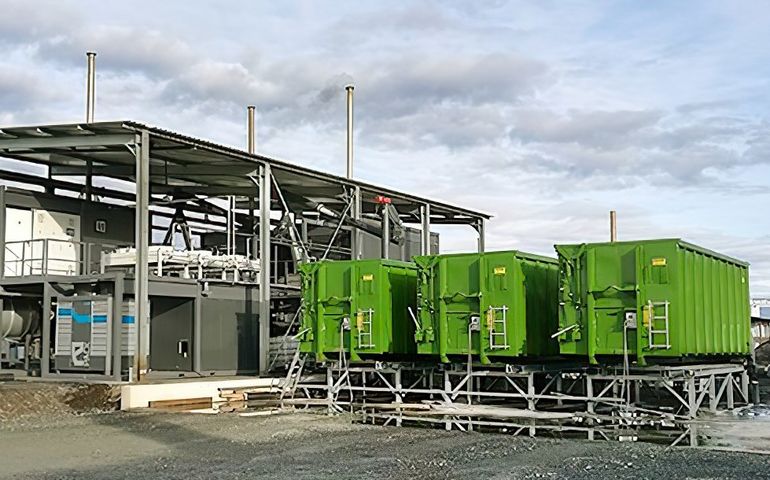East Millinocket biochar production plant gets $800K boost from FAME
 Courtesy / SBC
A biochar processing plant, similar to this one, has received financing to buy equipment for its site in East Millionocket, where it will be the anchor tenant of the inovation campus at the former mill site.
Courtesy / SBC
A biochar processing plant, similar to this one, has received financing to buy equipment for its site in East Millionocket, where it will be the anchor tenant of the inovation campus at the former mill site.
The Finance Authority of Maine has approved an $800,000 FAME Direct Loan to Standard Biocarbon Corp., to help pay for equipment for the company's biochar operation at the former East Millinocket mill, pending approval of financing from other agencies.
SBC, the anchor tenant of the new town-owned innovation campus, will use the loan to buy two kilns that will be used to produce biochar, which is a granular carbon substance produced when organic matter is decomposed thermally in an oxygen-starved chamber, a process called pyrolysis.
SBC signed a letter of intent in February with the East Millinocket Industrial Inc. board of directors to locate at the developing innovation and industrial park at the former Great Northern Paper site. The company will initially create eight jobs, with more possible in the future, FAME said in a news release about the financing. The board oversees the mill site, which is owned by the town.
The total project cost is $5.6 million, and FAME’s contribution to the overall project would be 14%, intended to be part of a larger loan in wheich other lenders and grantors would also participate, pending approval of their part of the financing.
SBC will begin manufacturing biochar this fall, after the pyrolactic kilns, which will be imported from Germany, are installed. The company will stockpile and source feedstock across the Penobscot Valley with local suppliers. Kilns will be added with increasing demand.
Biochar: jobs, innovation and climate
“Solid early support from the Maine investment community, state, county and East Millinocket officials, and the Maine forest products industry, has been incredibly helpful in launching this business,” said Fred Horton, SBC cofounder, president and CEO.
“This investment supports the creation of an entirely new forest products industry in Maine, harnessing the existing underutilized infrastructure of our vast working forests to manufacture a product with rapidly growing and nearly unlimited potential demand.
"Trees are very efficient at taking carbon from the air, but they return it all when they die and decompose or are burned," Horton said. "Our product does not break down in nature, keeping carbon out of the atmosphere for millennia while offering myriad other environmental benefits from soil enhancement to water purification, animal feed and other uses."
David Daigler, FAME board chair, said, “FAME is pleased to support this project, which promotes utilization of Maine’s natural resources, adding value to produce biochar. It also will help to reduce Maine’s carbon footprint."
Daigler said that the unemployment rate in the Millinocket region is nearly three times higher than the rest of the state, and the new production plant will help to create jobs in advanced technology in the region. He said it will also supports indirect jobs in construction, transportation and the wood products industry.
SBC's vision is to be the largest biochar producer in North America, according to the release. The charcoal-like byproduct is highly porous and safe for the environment. The material is already used in Europe, and has become a fast-growing industry in the U.S. The commodity's applications include agriculture, remediation, advanced polymer science, construction and building materials, odor control and animal feed additives.
Biochar also uses the process of carbonization as a climate protection tool. The production process of biochar sequesters carbon. Carbon sequestration is the process of capturing and storing atmospheric carbon dioxide and is one method of helping to reduce the amount of carbon dioxide in the atmosphere.
Editor's note: The financing information in this version has been updated.














0 Comments